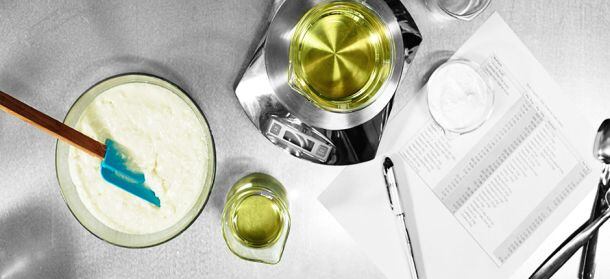Richard Galloway, a consultant at Qualisoy (a soybean industry initiative to bring new traits to market), said the United Soybean Board is supporting efforts by the Institute of Shortening and Edible Oils (ISEO) to explore whether new labeling conventions for FHOs could change perceptions.
The problem, Galloway told FoodNavigator-USA, is that consumers don’t understand the difference between partially hydrogenated oils (which create trans fats, and are being phased out following an FDA crackdown); and fully hydrogenated oils (which can actually help eliminate trans fats).
Hydrogenation has been totally demonized
Fully hydrogenated soybean oil, for example, can be blended with high oleic soybean oil [high stability, low sat fats] to create products without any palm oil in bakery applications requiring harder fats, he said.
Meanwhile, interesterified fully hydrogenated oils (where you apply an enzymatic catalyst that causes a chemical change in the oil similar to that achieved via partial hydrogenation but without producing the same kinds of bonds – trans isomers - or trans fats) have superb functionality, he explained.
The last thing we want to do is mislead consumers
But many manufacturers won’t use them because they don’t want to use the word ‘hydrogenated’ on their labels, he added.
“Hydrogenation [per se] has been totally demonized, and the consumer thinks full hydrogenation is even worse than partial hydrogenation, so it’s created a lot of confusion.
“The last thing we want to do is mislead consumers, so the FDA needs to be involved in the process from early on, along with consumer organizations. But we need to find a term
[to replace ‘fully hydrogenated’] that consumers won’t misunderstand.”
He explained: “If there were a name change, it would make a huge difference as the products are tremendously functional; you can create products without using all the palm oil [a widely used replacement for partially hydrogenated vegetable oils], have less saturated fat and better functionality.
“Palm oil has a very restrictive melt curve, whereas you can really vary the melt curve when you interesterify fully hydrogenated oils. ADM, Bunge and Cargill all have interesterification capabilities, but the labeling issue is holding people back.”

Not surprisingly, perhaps, palm oil specialist AAK says palm oil is the best alternative to PHOs in many applications, and that ramping up production of fully hydrogenated soybean oil, or interesterified fully hydrogenated soybean oil - and then calling it something else - is not the answer: "We think consumers will demand non-hydrogenated alternatives [to PHOs]. Consumers may not necessarily understand what hydrogenation means and will not differentiate between partial or fully.This will mean that the industry will have to offer non-hydrogenated alternatives. Palm oil is naturally a semisolid and can be used to replace PHOs."
“The Institute of Shortening and Edible Oils (ISEO) views fully hydrogenated oils (FHOs), alone or in combination with other fats and oils, as an important replacement ingredient for partially hydrogenated oils (PHOs).
“They contribute heat and shelf stability and impart many of the technical functions (e.g. melting properties, crispness and other textural characteristics, etc.) attributed to PHOs. [However], we believe that consumers, in general, cannot and do not distinguish differences between PHOs and FHOs and suspect that both are erroneously seen as substantial contributors of trans fatty acids to the diet.
“ISEO’s work to better understand the level of confusion around how FHOs are described and the resultant implications for consumer acceptance is ongoing.” Robert L. Collette, president, ISEO
PARTIALLY HYDROGENATED OILS are made by adding hydrogen to vegetable oil via a partial hydrogenation process, which can make liquid oils more solid at room temperature (enabling firms to use liquid vegetable oils in baking instead of butter where a more solid fat is required, for example), and also makes them stay fresher for longer/more stable. However, it also creates harmful trans fats, which have been shown to increase the risk of coronary heart disease.
'FULLY' or 'completely' HYDROGENATED OIL doesn't contain trans fat.
Good, bad and ugly fats
As to whether consumers are as bothered about cutting down on saturated fat as they used to be, it's hard to say, he said. However, recent meta-analyses challenging the link between saturated fats and heart disease garnered a lot of media attention (TIME magazine famously invited us all to EAT BUTTER in summer 2014), while sugar has become public enemy #1 in the nutritional stakes.
That said, he doesn’t anticipate that current advice to keep saturated fat consumption in check (as per the 2010 Dietary Guidelines) will change in the 2015 guidelines, which are due out shortly.

High oleic soybean oils
As for the next generation of high-oleic soybean oils, which have 20-60% less saturated fat than commodity soybean oil and 75% less than palm oil, supplies are still fairly limited, but are growing every year, he said.
“Chefs really like the oils as aside from the nutritional profile, they offer extended fry life, less clean-up, and improved quality – so you get a crispier mouthfeel, a nicer color, and the flavor of food comes out more.”
But why not just use high oleic canola? “Because high oleic soy is a better oil, period,” claimed Galloway. “It has a longer oxidative life, the food products made with it also have a better flavor, texture and appearance, particularly if they have been left out for a while.”
GMOs: If we go the same way as Europe, the consumer will suffer
Asked about how the GMO factor was impacting purchasing decisions in the edible oils market, much will depend on what happens from a labeling perspective, he said.
“I think if we go the same way as Europe the consumer will suffer; it’s a shame to base policy based on what 2% of people think is reality, especially when they are wrong.
“But if this is what the consumer wants, the soybean industry does have non-GMO products available, although current supplies are fairly limited, and there is a price premium.”
